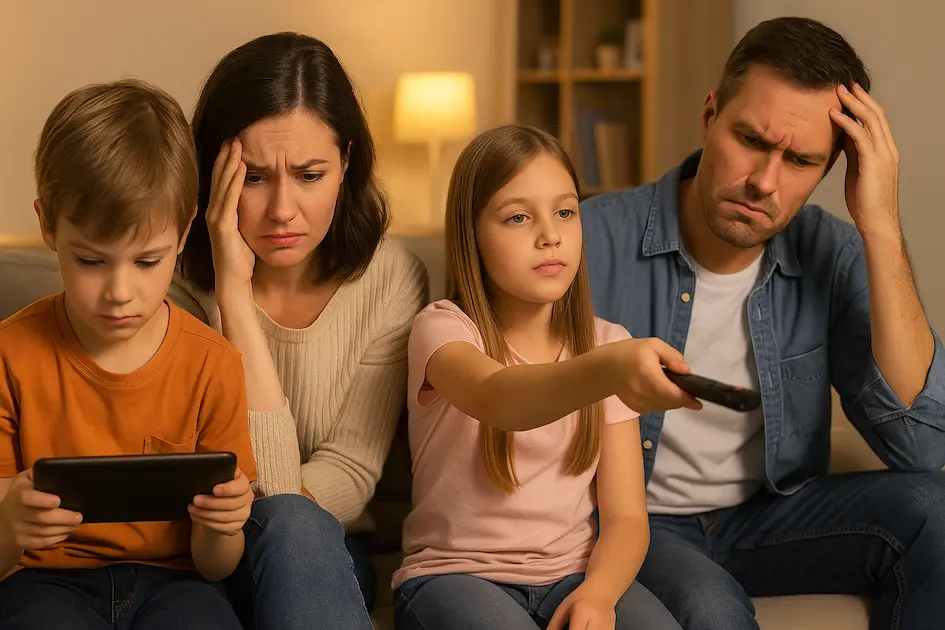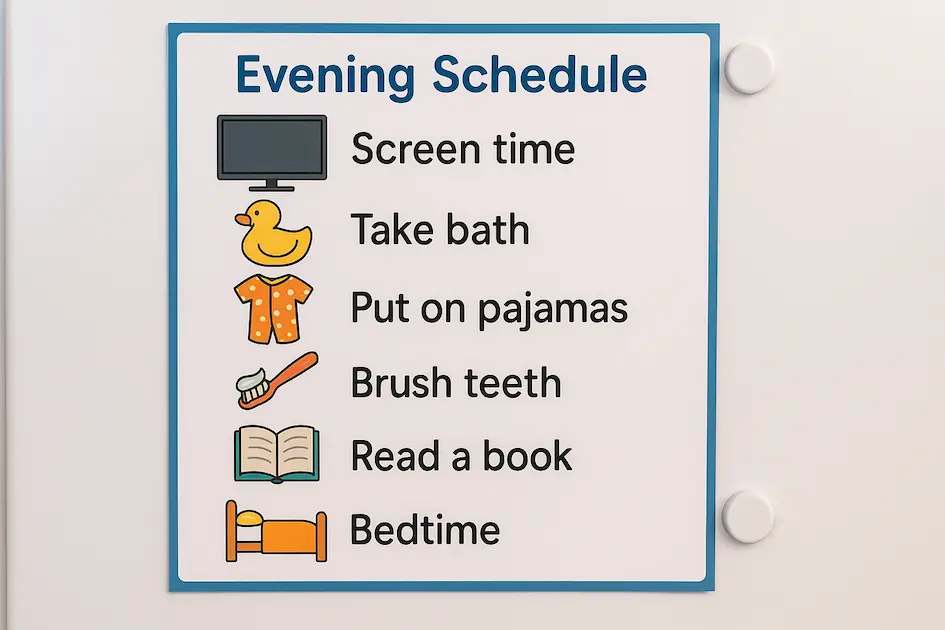How to Manage Screen Time on School Nights
Managing screen time on school nights is one of the most common challenges parents face. Between homework on tablets, evening cartoons, and the endless scroll of social apps, it can be tough to set limits without meltdowns. But the good news is, small changes in your routine can make a big difference. With a few practical tools and consistent boundaries, you can help your child wind down, sleep better, and still enjoy a little screen time the smart way.

Why Screen Time Needs a School Night Strategy
Many kids have higher exposure to screens than ever before — and that doesn’t slow down during the school year. But research shows that too much screen time before bed can impact:
- Sleep quality and ability to fall asleep
- Behavior and mood the next day
- Homework focus and attention span
Setting limits during the school week helps your child protect their rest and reset habits after summer break.
1. Set Clear, Age-Appropriate Screen Limits
Before you even bring up rules, it helps to decide what screen time should look like for your family. That might mean:
- 30 minutes of a show after dinner
- Only educational games on weekdays
- No screens past 7:30 PM
Make the rule simple, specific, and repeatable.
“We watch one show after homework, then it’s time for our screen-free bedtime routine.”
2. Use a Visual Schedule to Support Transitions
Visual schedules help kids see what’s coming next. If your child struggles with transitions, especially from screens to bedtime, try posting a simple visual timeline near the homework or TV area.
Use pictures for:
- Homework time
- Screen time block
- Snack/brush teeth
- Lights out

No products found.
3. Create Screen-Free Zones in the Home
If screens are allowed everywhere, they’re harder to resist. Designate “no-screen zones” like:
- The kitchen table (meals only)
- Bedrooms (no TVs, tablets, or phones)
- The homework station (unless needed for assignments)
You might like this post on “How to Set Up a Homework Station” to keep tech organized and purpose-driven.
4. Offer Fun, Screen-Free Alternatives
It’s easier to reduce screen time when your child has something else to do. Keep a few go-to options handy:
- Puzzle books or sticker pads
- Audiobooks or podcasts for kids
- Art supplies in a simple homework caddy
- (Check out “How to Build a Simple Homework Caddy” for tips.)

No products found.
5. Model Healthy Screen Habits
Kids notice what you do. If you’re scrolling your phone while asking them to unplug, it sends mixed signals.
- Try putting phones away during dinner.
- Use “do not disturb” mode in the evenings.
- Show them what healthy tech use looks like.
6. Be Consistent, but Flexible When Needed
Consistency builds trust, but flexibility shows understanding. If your child has a rough day or needs to FaceTime a grandparent, that’s okay. Let them know screen rules exist to support them — not punish them.
Support Better Sleep with a Screen-Free Bedtime Routine
Screens and sleep don’t mix well. Here’s a bedtime routine that sets the stage for restful nights:
- Turn off screens at least 60 minutes before bed.
- Take a warm bath or shower.
- Dim the lights and offer a quiet activity.
- Read a chapter or picture book together.
- Stick to a predictable lights-out time.
You may also like “Morning Routine for Kids” to keep the next day running smoothly.
No products found.
Final Thoughts: Make School Nights Calmer, Together
Managing screen time on school nights doesn’t mean eliminating screens altogether — it’s about creating healthy rhythms that support learning, sleep, and emotional balance. Start small, stay consistent, and give yourself (and your kids) grace along the way.
“It’s not about being screen-free. It’s about being screen-smart.”
Looking for ways to organize the paper clutter school brings in? Try “How to Organize School Papers at Home” for smart filing tips.
🍯 More Buzz from the Hive
Last update on 2025-11-21 / Affiliate links / Images from Amazon Product Advertising API



